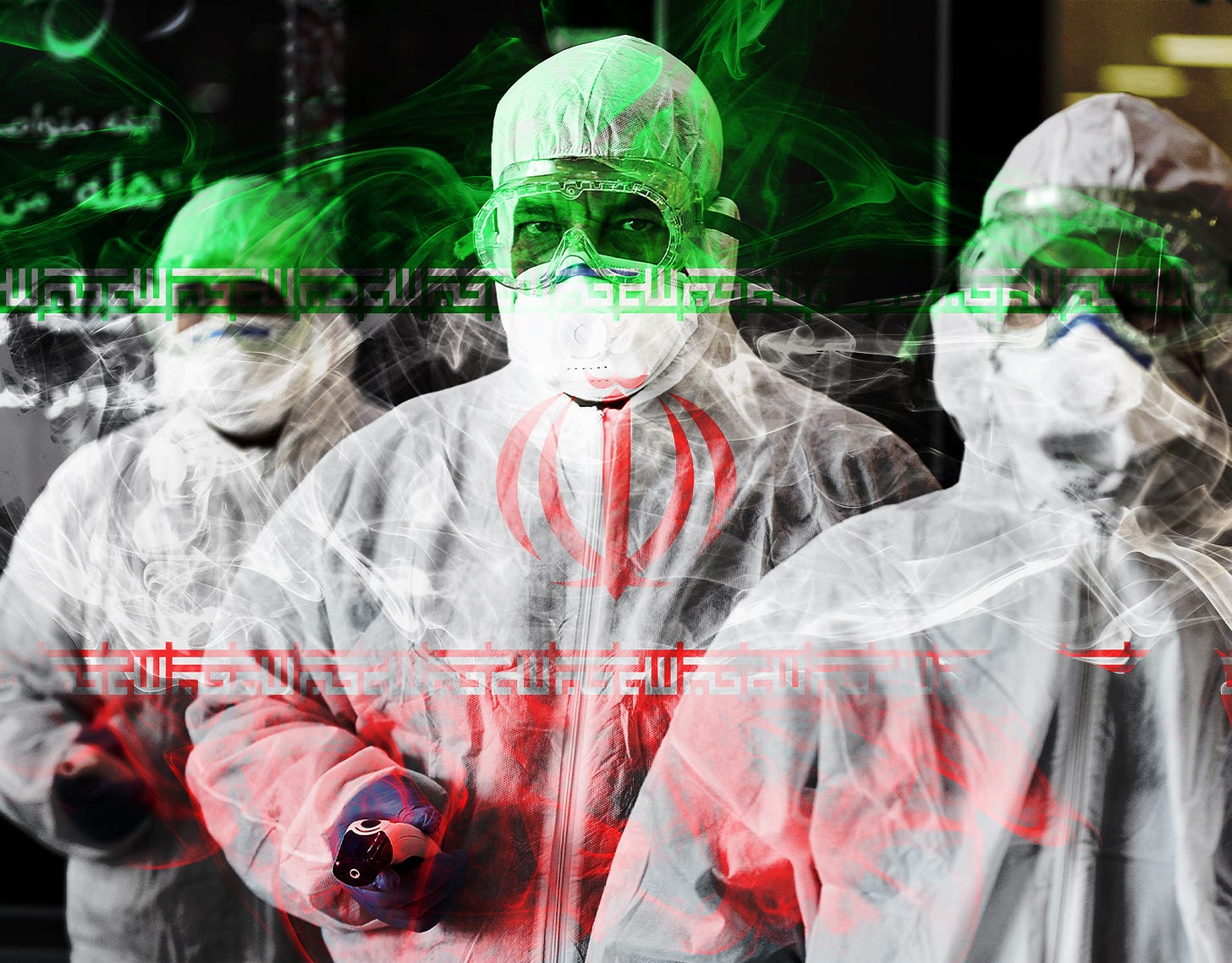Iran and the Coronavirus Crisis
Iran has had more COVID-19 deaths than any country but China. The Iranian people are right to doubt the regime’s facts and policies.

This morning, news broke that Iraj Harirchi, Iran’s deputy health minister and the point man for the regime’s response to the coronavirus outbreak, has tested positive for the virus and quarantined himself at home—deepening the sense of unease in the country where fearful rumors are already running rampant.
Outside China and its neighbors in East and Southeast Asia, Iran is the country most affected by the outbreak. Official government sources say that, as of Tuesday, more than 90 people have been infected in Iran and 16 have died. That gives Iran the second-highest number of officially reported deaths after China itself.
Unconfirmed sources estimate the numbers to be much higher. Radio Azadi, the Afghan arm of the U.S. government-sponsored Radio Free Europe/Radio Liberty has reported that the actual numbers of the infected might be up to 300. Radio France Internationale Farsi has reported the same number. A member of the Iranian parliament from Qom is claiming that there are some 50 people dead in that city, a figure the regime disputes.
The Iranian public is in an absolute panic. Whether the official numbers are accurate or not, everybody believes the worst, and nobody trusts the regime’s reports. Four decades of lies have left the regime untrustworthy in the eyes of the people.
What led to this outbreak in Iran: incompetence or corruption? The answer is yes!
In late January, Ali Javanmardi, an independent Iranian journalist in exile, began reporting on indications of coronavirus in Iran. Javanmardi is a credible journalist, and one with good connections among anti-regime sources inside the government, including the Islamic Revolutionary Guard Corps (IRGC), who leak news to him. Following the rumors, Tasnim News Agency, affiliated with the IRGC, claimed that there had been no reports of infections, and the person responsible for the rumors had been arrested. But the rumors kept growing. And the regime kept denying them.
February 11 marked forty-one years since the revolution of 1979, an anniversary that is always the occasion for the annual march to build support for the regime. Turnout was especially important, given the widespread and violent protests last November and January—especially after the negative publicity the regime received for shooting down a Ukrainian passenger jet. The worry among regime leaders was that confirmation of the epidemic would suppress the turnout, as people would fear to be in populated areas.
Ten days later, the regime worried about turnout for another event. February 21—last Friday—was the date of parliamentary elections in Iran. A leaked official document later confirmed that the regime’s officials had been directed to suppress reports about the matter out of a worry for a lower turnout. Fears about coronavirus, on the top of regime’s high unpopularity, kept people at home: the elections were projected to have—and indeed ended up having—the lowest turnout in the regime’s history.
One other prominent winter event is especially worth noting in the context of the coronavirus: a Persian heritage festival in Hamedan, the birthplace of Cyrus the Great, scheduled for January 24 to February 9 to coincide with the Chinese New Year—so as to attract Chinese tourists. Despite the coronavirus outbreak in China, the festival continued, and Chinese tourists arrived in droves to visit Hamedan and other cities across Iran—and Iranians, in response, kept uploading videos of sightings of Chinese tourists to show their objection to the regime’s policy of allowing them into Iran in the wake of the epidemic in China.
Iran became one of the very few countries that did not ban flights from and to China. In fact, the IRGC-owned Mahan Airlines is the only one that is still, even now, carrying passengers from third countries to China, with a stop in Tehran. In the midst of the panic on February 2, China’s ambassador to Iran tweeted a picture of himself and the CEO of Mahan Airlines and wrote that the airline had expressed its willingness to continue “its cooperation with China.” After all, the IRGC wanted to keep lining its pockets, and the Iranian regime needs China to circumvent U.S. sanctions.
Things get worse. As the COVID-19 disease is spreading, masks are nowhere to be found because, according to leaks from inside the IRGC, security forces had taken face masks out of the market since protesters had used them to cover their faces.
Medications are in short supply too. Although medications are not banned under U.S. sanctions and pharmaceutical imports from the European Union have not decreased, the regime has intentionally been keeping them in short supply for a global and domestic campaign to exaggerate the human cost of sanctions—the same tactic Saddam Hussein played. On the other hand, in December, the daughter of Mohammadreza Nemat Zadeh, President Hassan Rouhani’s first minister of industry, mining, and trade, was sentenced to 20 years in prison and 74 lashes. It turns out that she had created a monopoly over medication drugs and had been storing stockpiles of them to fix the prices. Despite the alleged crackdown on her network and even the recent U.S. Treasury Department announcement of a concerted effort to solve the medication shortage, the problem remains.
Iranian healthcare workers, meanwhile, frequently post on social media that they have been given no directions and informed of no protocols about how to treat those who are infected or are suspected to be infected by the virus and are figuring things out on the fly.
Currently, all of Iran’s neighbors and even some Caucasus countries have closed down their borders in Iran, leaving the country in a quarantine.
What could have been easily prevented is now becoming a national catastrophe because of corruption and mismanagement inside the government. Just like how it became a problem in China. That’s the gift of totalitarianism. Meanwhile, flights to and from China continue.

